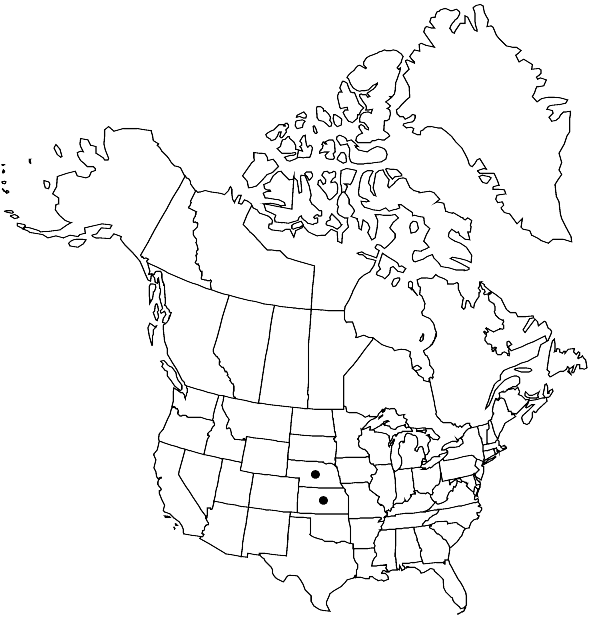Molendoa ogalalensis
Bull. Buffalo Soc. Nat. Sci. 32: 170. 1993,.
Stems to 2 cm, sclerodermis lacking or very weak. Leaves ovate to elliptic [spathulate], 0.3–0.6[–1] mm, entire, apex rounded; leaf base not much differentiated in size and shape, not sheathing; costa ending below the leaf apex, rounded in section at mid leaf, guide cells 2; distal laminal cells rounded-quadrate, 1:1, [1–]2(–3)-stratose marginally or entirely.
Habitat: Eroded mortarbed (cemented arkosic sand and gravel deposits) outcrops
Elevation: moderate elevations
Distribution

Kans., Nebr., Mexico (Sonora).
Discussion
Molendoa ogalalensis is known in the flora area from four localities in the central High Plains. It is unusual in the genus in the distal laminal cells having walls of equal thickness both superficially and internally. Other species of the genus commonly have the superficial walls clearly thicker than the internal, though this is not a rule. The large papillae centrally placed on the lumen is reminiscent of Tuerckheimia, which, however, is acrocarpous and has acute leaf apices. Although M. ogalalensis is not easily recognized, the lack of a distinct stem sclerodermis, 2-stratose distal lamina, each lumen with a massive simple or weakly 2-fid papilla, evenly thickened superficial and internal cell walls, and lateral perichaetia are diagnostic. It has a stem central strand (contrary to the original description). Costal stereid cells are commonly absent (the abaxial band is occasionally present).
Selected References
None.
